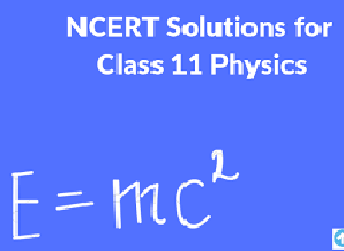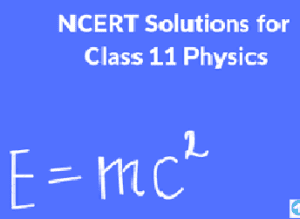It’s called Foundations of science and engineering, and it’s taught in grades 11 and 12. When you’re in grades 11 and 12, you learn about foundations for science and engineering. The NCERT answers for class 12 physics cover these chapters. You can use simple tools like class 12 physics ncert answers to help you build a strong foundation in physics. In the NCERT class 12 physics textbook, there are two parts. Parts 1 and 2 are broken up into two parts. Part 1 has eight chapters, and Part 2 has seven. All the NCERT answers for physics in the second and third sections of class 12 physics must be submitted for the board exams. It is good to use NCERT solutions for exams like NEET, JEE Main, and KVPY. Besides that, the NCERT answers for physics questions in class 12 can also be used to solve questions from other books.
This textbook is recommended as the main and most significant resource for CBSE students, according to the board of directors. The textbook has most of the information you need to pass school and board exams. It is essential for students to study very hard if they want to get an A on the exam.
Students should read through all of the chapters before they take the test to make sure they understand them. It is essential to read each chapter in full. In addition, you should look at the critical points at the end of each chapter for more information. Making notes from the chapter is also a good idea because it will help you learn and remember the information.
All of the questions in each chapter and the ones after each chapter must be answered. You can look over your answers or look at Infinity Learn‘s solutions pdf for help.
All of the diagrams in your book should be thoroughly practised, so make sure you do that. They are essential for students to understand.
Find examples from the book that use numbers and pictures to show how things work. They might be asked directly during the test.
This is what students learn about in the ncert solutions class 12 physics, which is:
- Physical-world:
The Physical World is an introduction to physics that explains what physics is and how it tries to present a wide range of material things with a few basic ideas and principles. In the next part of the chapter, we learn about two different types of physics: classical and quantum, and how they work. In addition, you will look at how physics, technology, and society work together.
- Sizes and unit conversions:
During this chapter, you will learn how to measure a number of different types of physical things. Bodily amounts are measured by comparing them to a fundamental, widely used standard. A unit is a general term that means anything that is the same. You can compare how much something weighs to this unit. Children learn about the primary and derived units, which are the units and dimensions they study. These units and dimensions can be thought of as a mix of fundamental units.
- Motion & Kinematics:
This chapter talks about an object’s change in position over time and how it moves along a straight line, which is called “kinematics.” Rectilinear motion is a term for this kind of motion. Graphs and equations are used to show many things about Rectilinear Motion, such as location, path length, displacement, average and instantaneous velocity and speed, and acceleration. This chapter talks about the beginnings of a movement. Newton’s first, second, and third laws of action, as well as the law of inertia, will be talked about in this class. It’s better to use real-life examples to help you learn about how things move and what forces are, the direction of forces that drive things, and how gravity affects them. It also talks about momentum and momentum conservation, as well as what happens when a body’s net force is the same as its momentum.
- Work, Influence, and the People You Meet:
This chapter will teach you about labour, power, and energy, as well as how they work together and how they work together. Equations are used to show that the Work-Energy Theorem can be proved with the help of.
Mechanics of Extended Body Motion: This chapter talks about the physics and math of extended body motion. This chapter’s primary goal is to teach students about the centre of mass and the speed of different objects.
- Gravitation:
Everything falls down to the ground because of gravity, and we all know that this is true. This chapter will teach you about gravitational force and other things that go along with it. This is not the only thing we look at when we look at Kepler’s laws.
Rotational Motion: As we said before, a body’s motion is determined by how its mass is spread out inside of it. That’s not all: You only learned about rigid bodies when you looked at them in the presence of a complex solid body that had a fixed shape and size. A rod of iron isn’t tough in the strictest sense. It can be bent, stretched, or squeezed.
- When it comes to fluid dynamics, you’ll learn about how things move and how they work.
Fluids are things that can move, like liquids and gases that can move. Here, we’ll talk about some of the most important physical characteristics of fluids. In addition, the chapter talks about the similarities and differences between liquids and gases and the differences between fluids and solids.
These are some of the essential things that 12th-graders learn in the chapters. Infinity Learn is a website for kids who want to learn more about physics. Also, this website has the answers to the 12th physics book back answers, which is what students need to do well on the test.









